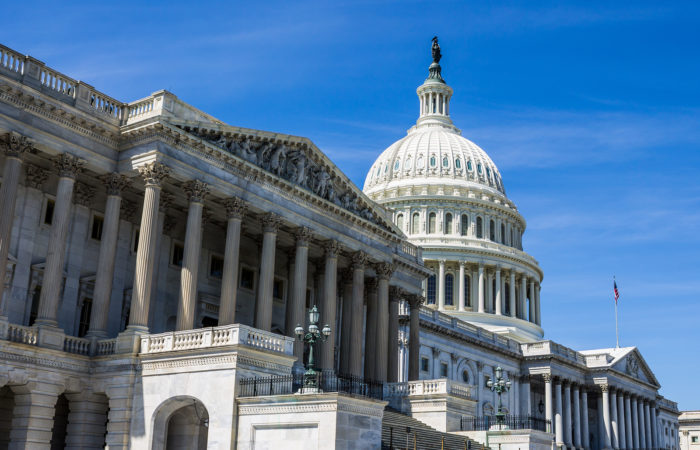 Tom Murley is one of the most visible faces in European and global renewable energy investment and is a leading advocate for increased institutional investment in energy projects and infrastructure. He has participated in the financing and acquisition of over $10 billion in energy projects and is an expert on the intersection of renewable energy and infrastructure investment trends, renewable energy policy, renewable energy subsidies, energy market design, and regulation. In 2004, he founded the renewable energy fund business for HgCapital one of Europe’s leading private equity houses marking HgCapital as one of the first European private equity firms to invest in renewable energy infrastructure. Tom is active in industry and investor organizations. He has served on the boards of the Institutional Investors Group on Climate Change and the Norwegian Wind Energy Association. He has chaired the Sustainable Energy and Environment Committee of the British Venture Capital and Private Equity Association and has served on finance committees of WindEurope, the Swedish Wind Energy Association, and Renewables UK. Tom also teaches a practical course in Project Finance Law in the Master of Banking and Finance Law program at Boston University School of Law in Boston, Massachusetts and serves on the board of Ameresco, Inc. and Gore Street Energy Storage Fund. You can read more about Tom’s background and learn about his company by visiting his website http://www.twolightsenergy.com
Tom Murley is one of the most visible faces in European and global renewable energy investment and is a leading advocate for increased institutional investment in energy projects and infrastructure. He has participated in the financing and acquisition of over $10 billion in energy projects and is an expert on the intersection of renewable energy and infrastructure investment trends, renewable energy policy, renewable energy subsidies, energy market design, and regulation. In 2004, he founded the renewable energy fund business for HgCapital one of Europe’s leading private equity houses marking HgCapital as one of the first European private equity firms to invest in renewable energy infrastructure. Tom is active in industry and investor organizations. He has served on the boards of the Institutional Investors Group on Climate Change and the Norwegian Wind Energy Association. He has chaired the Sustainable Energy and Environment Committee of the British Venture Capital and Private Equity Association and has served on finance committees of WindEurope, the Swedish Wind Energy Association, and Renewables UK. Tom also teaches a practical course in Project Finance Law in the Master of Banking and Finance Law program at Boston University School of Law in Boston, Massachusetts and serves on the board of Ameresco, Inc. and Gore Street Energy Storage Fund. You can read more about Tom’s background and learn about his company by visiting his website http://www.twolightsenergy.com
Why are investors interested in the sustainable energy market now?
Three factors are driving investor interest in sustainable energy today – climate change, cost, and interest rates. First, most institutional investors are convinced of climate change which presents investment risks and opportunities. As documented by the Bank of England, Hank Paulson’s and Michael Bloomberg’s Risky Business project, climate change presents risks to their investments. At the same time, sustainable energy presents investment opportunities. It is fully rational for them to switch out of coal and into renewables. As one investor once said to me “The future is low carbon, and we think low carbon investments will outperform in the long run.”
Second, the cost of sustainable technologies has fallen dramatically and continues to fall. Renewables are competitive and in many applications are the least cost solution. For decades when renewable were more expensive investors would worry about the withdrawal of subsidies and resulting financial losses. This fear is now largely removed with lower costs.
The third is the low-interest rate environment. With interest rates still well below long-term averages, investors need to find low-risk investments that provide income greater than bank accounts and government and corporate bonds. Infrastructure investments, including renewable energy projects, can provide that superior income, that is why infrastructure is the fastest growing investment asset class, and within the infrastructure, renewable energy accounts for nearly 50% of global capital raised.
From an investor’s perspective, what is the renewables market outlook for 2019?
Overall, robust, but the level or robustness varies around the globe. In the US developers and investors are rushing to put wind and solar projects in place before tax credits expire or reduce in 2020 and 2021, so this will be a strong year for investment. In Asia (ex-China) and Africa investment levels are high as there is a fundamental need for power and wind, but especially solar, can be rapidly deployed at scale. China is rightfully pulling back on some of its subsidies now that they have established world-leading renewables business. But as a result investment in China will slow this year. Latin America investment is on a country by country basis. Argentina, Chile, and Mexico are strong markets, and Colombia may be about to explode, but Brazil, Venezuela, and most Central American countries lag due to political and economic concerns. Europe is a mixed bag. Northern Europe continues to make strong advances, but the poorer economies of Southern and Central Europe lag in investment. Wind, solar and battery storage are the main investments in all of these markets. Offshore wind will continue to be strong in France, UK, US, Germany, and the Netherlands.
What are some of the key differences between the European and US renewable energy markets?
Historically, the main differences were support mechanisms and political commitment. Europe has largely supported renewables by tariffs and power purchase agreements with producers, the cost of which is borne by all consumers. The US has used tax credits, which support a limited number of investors. Or as I like to say, “top line support versus below the line support”. Europe’s political commitment to renewables and climate change, at both EU and national levels, has always been stronger; and that is especially true in the current environment. This has also led to more public acceptance of renewables than in the US. Europe has always had stronger institutional investor support for renewable than the US. If one takes a look at large global renewable energy funds, the overwhelming majority of capital comes from European investors. European pension funds and insurance companies have also led the way with direct investments outside of funds.
European utilities are much more engaged than US utilities. Five of the global top 10 renewable utilities are European, only two are US. The other three are Chinese. Looking into the future, however, I think that the markets will become similar. On both continents, we are moving to subsidy free renewables and we will see more competitive auctions. The US should emerge as a larger market, as Europe matures and the US begins to realize its potential.
What are the major barriers you see for market growth?
Poor or willful misunderstanding of policymakers and regulators of the current state of renewables; capacity of regulators to make changes in a changing world; and incumbent utility political power. Just yesterday on the radio I heard yet another political commentator suggesting that we not deploy renewables today, but focus on more research and development to bring costs down. That person is operating on out of date data, which is not uncommon among policymakers and regulators. The fact is these technologies are cost competitive today, but they either don’t know that or are willfully ignoring the data to support other political objectives.
Lack of capacity of regulators to make changes refers to the fact the energy technology is changing faster than regulators can respond (just as with social media and the communications sector). The energy regulatory system was built around monopoly utilities with monopoly territories, and big central power stations moving power to cities and remote areas. Today we have multiple competitive players, independent generators and with solar every house and business can be in the generation business. Microgrids, embedded generation, battery storage, and better grid software solutions mean that we do not need large and expensive grid extensions, as we saw in Boothbay. Our regulators are not equipped for this new world, and they are trying to fit the new world into a regulatory framework created for a bygone era.
The political power of incumbent utilities is enormous. Utilities throughout the US have fought home solar initiatives. Why? Because the home customer is the most profitable and if you lose them profits go down. The Edison Electric Institute has called solar an “existential threat” to the traditional utility model. In the electric power sector, utilities make their money on the distribution of electricity and keeping customers. Generation is subject to cutthroat competition and transmission is highly regulated. In distribution and supply, they make safe returns, which is why they oppose storage, microgrids or grid extensions unless they own it and can put it in “rate base”. The technology changes are also allowing business model changes, such as direct corporate purchasing of renewable energy from wind and solar farms, all of which impinge on the traditional utility business model, and they are fighting back to stem the tide.
What technologies do you foresee will be game changers in the sustainable energy market?
Clearly battery storage, but I think that the real game changers will come from “Big Data”. There is a company in The Netherlands that asked the question “Why can’t I buy my electricity from the farmer next door with the wind turbine?” That company now matches independent buyers and sellers of electricity and has over 100,000 customers and no utility is involved in the transaction. I have often wondered why can’t I have an iPhone application into which I download my electric usage information and then tap a button to ask who will supply me with power for the next day, week, month or year and run a little auction? If UBER can do it for taxis, why not for power? Now that would be a real game changer.


